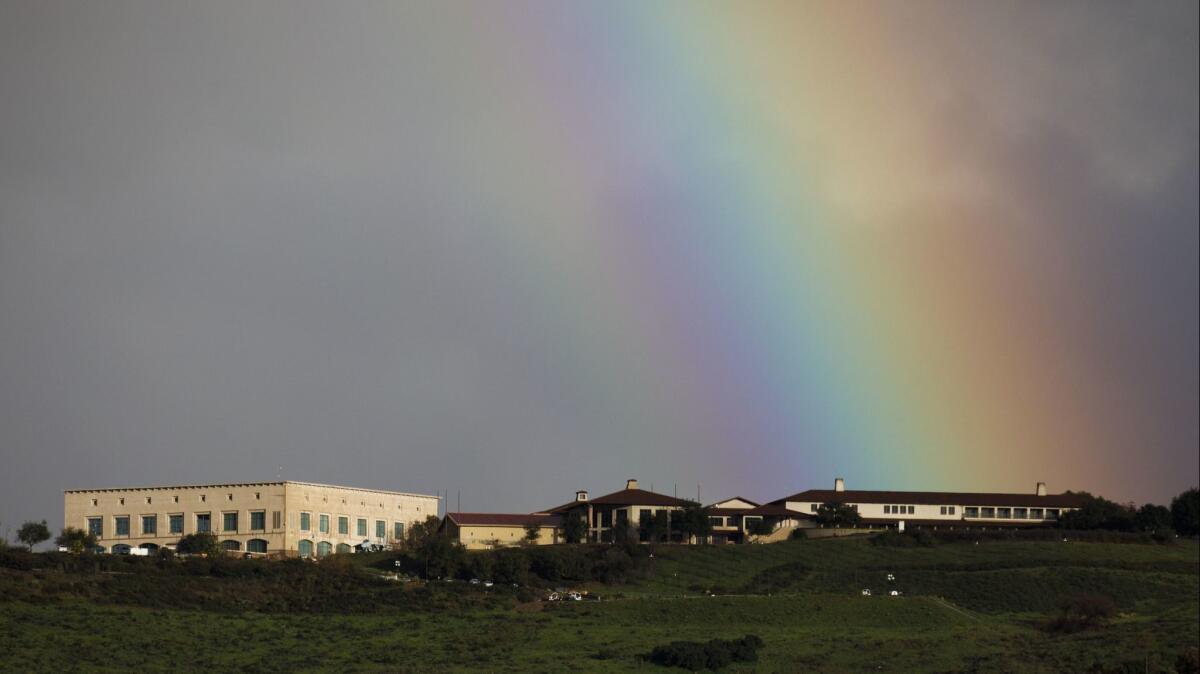How atmospheric river storms tamed California’s drought

California’s unusually wet and cold winter has caused epic snow, serious flooding and a renewed interest in umbrellas and portable heaters.
But the atmospheric river storms have also put a huge dent in the state’s water woes — at least for now.
It’s common in a wet winter, though not a guarantee.
Here’s a rundown on how this winter’s storms have affected California, from the pages of The Times.
How do things look in the Sierra?
The snowpack has more than doubled in the last month — to 113 inches deep, or 43½ inches of water if it were to melt — says Chris Orrock, state Department of Water Resources spokesman.
A measurement taken Thursday was the fifth-deepest recorded at Phillips station in the Sierra Nevada since the department started surveying the snow there in 1941, Orrock said.
“We’re very happy about it,” he said. “It was cold. It was snowing the whole time … and sticking.”
A cold and wet January contributed to an initial doubling of the snowpack at the Phillips station that month — from 25 inches to 50 inches, or 18 inches of water when it melts.
And the storms haven’t let up since then. Another weather pattern is moving into Northern California this weekend.
Where is this wet winter coming from?
The thanks go to a weather system known as an atmospheric river.
Atmospheric rivers are long plumes of water vapor that can transport tropical moisture across the Pacific Ocean and disperse it in California.
Such storms carry so much water, they’ve been likened to a river in the sky — hence, their name.
A strong atmospheric river can carry 7½ to 15 times the average flow of liquid water at the mouth of the Mississippi River.
How has this affected California’s water supply?
Atmospheric rivers can help vanquish droughts.
In 2016, a series of intense atmospheric rivers helped ease California’s epic drought by producing record rain and snow in the northern part of the state.
Just a few atmospheric river events can provide West Coast states such as California with one-third to one-half of their annual precipitation.
This year, the rains have significantly improved California’s drought outlook.
But it’s uneven. The Sierra snow is a major source of California’s water. As the snow melts, it’s collected in a series of rivers, dams and reservoirs and sent to farms and cities.
But in Southern California, much of that water is wasted.
Climatologist Bill Patzert estimates that more than 80% of the region’s rainfall ends up diverted from urban areas in Southern California into the Pacific.
“All those trillions of gallons of rain, which sound so sweet, really end up in the ocean,” he said.
“There are some catchment basins, but it’s been so dramatically dry for the last two decades that it’s not filling them up. Roots and soil are sucking up the water and preventing it from getting to the groundwater basins.”
More to Read
Sign up for Essential California
The most important California stories and recommendations in your inbox every morning.
You may occasionally receive promotional content from the Los Angeles Times.










